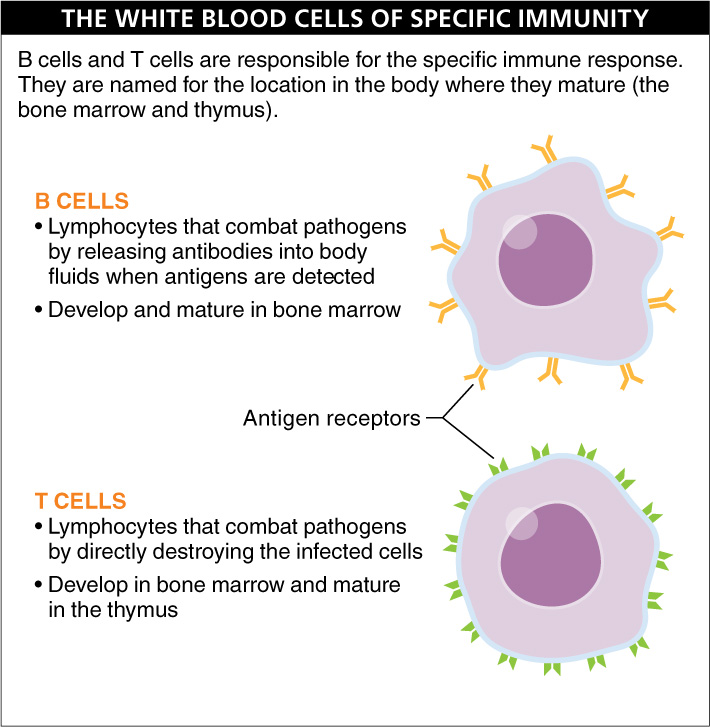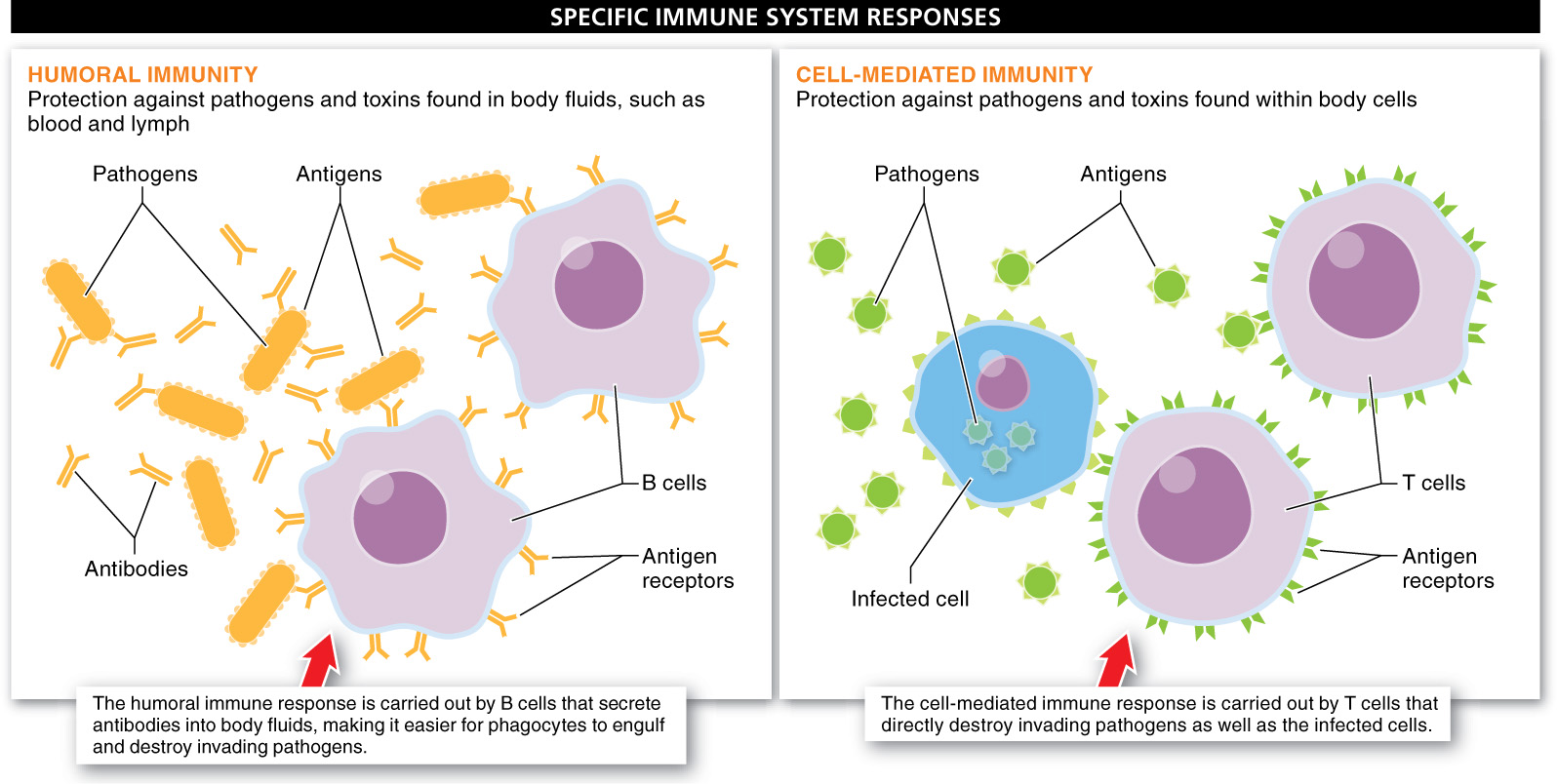
Lymphocytes are the white blood cells responsible for the specific immune response. These cells can be found circulating in the blood and lymphatic systems, and they reside in lymphatic organs such as the lymph nodes and spleen. (See Section 21-
There are two major types of lymphocytes. Both develop from stem cells in the bone marrow, but one type leaves the bone marrow and continues to mature in the thymus, a lymphatic organ located in the upper chest. Lymphocytes are named for where they mature, so those that mature in the bone marrow are named B lymphocytes, or B cells, and those that mature in the thymus are called T lymphocytes, or T cells (FIGURE 26-22). The other cells that normally circulate in the lymphatic system are dendritic cells, which use the lymphatic system for the sole purpose of meeting up with lymphocytes.
1062
Both B and T cells have antigen receptors on their surfaces. Lymphocyte antigen receptors are structurally diverse. In fact, there are endless variations of these receptors. It is estimated that our lymphocytes can recognize billions of different pathogens. But each individual lymphocyte doesn’t have billions of different antigen receptors. Instead, each lymphocyte has just one type of receptor that recognizes just one antigen, and it has many copies of this receptor on its surface.
Like an intense military operation on land and sea, the specific immune system operates on two fronts in order to win the war. Lymphocytes fight pathogens in both body fluids (humoral immunity) and within cells (cell-

1. In humoral immunity, also called antibody-
1063
2. In cell-
To defeat a specific pathogen, numerous identical lymphocytes (bearing the same antigen receptor) are needed. You may be starting to ask yourself, do we have trillions of immune cells? How does the body have room for all of these individual armies of lymphocytes ready to face any enemy it might—
TAKE-HOME MESSAGE 26.7
Lymphocytes are a type of white blood cell. Two types of lymphocytes are associated with the specific immune system: B cells and T cells. B cells are responsible for the humoral response, and T cells are responsible for the cell-
How are humoral and cell-
Both humoral and cell-mediated immunity involve lymphocytes and protect the body from pathogens. Humoral immunity protects the body from pathogens found in body fluids. This is accomplished by the activity of phagocytes and B cells that produce and secrete antibodies. Cell-mediated immunity protects the body from pathogens found within body cells. It involves the destruction of these infected or cancerous cells by T cells.